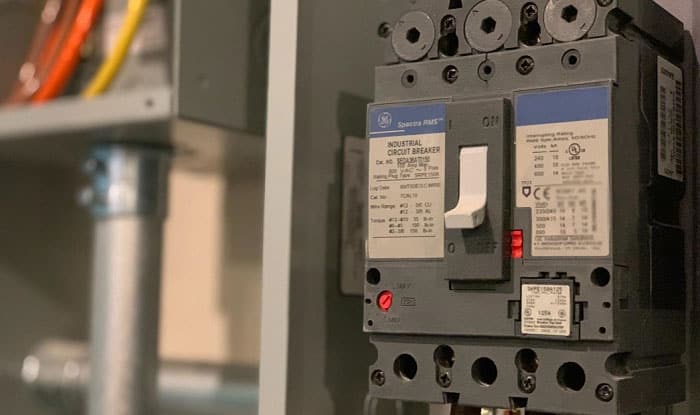Do you know how to identify the capacity of a circuit breaker? Do you know what do the numbers on a circuit breaker mean?
Generally, the number you see on your circuit breaker is also the amp rating of the unit. However, some circuit breakers have other numbers and letters included in its label.
Here’s an in-depth explanation to learn more about the numbers on breaker switches.
Table of Contents
What Do the Numbers and Letters on a Circuit Breaker Mean?
A typical house circuit breaker you can find has a highlighted number label. Those circuit breaker numbers mean the amp rating of a particular circuit breaker. You can also find these labels on other commercial or industrial circuit breakers, like on a two-pole breaker.
But aside from the highlighted number and logo, you can also find other combinations of digits and letters printed on a breaker. These include its kiloampere rating, like 5KA or 10KA, which indicates the maximum amps it can trip. You may also see 110 VAC, 220 VAC, or 240 VAC printed on the unit, which simply means its voltage rating.
Another thing you can find on a circuit breaker label is the Hz rating—this is the line frequency it can transmit. Most of the world uses 50 Hz as the standard line frequency. However, America and some parts of Asia use 60 Hz.
The frequency rating you need will vary depending on your location, so you have to check with your local electrical company if you’re unsure.
Beyond this basic information, you might find further catalog codes or numbers on an MCB or Miniature Circuit Breaker and an MCCB or Moulded Case Circuit Breaker. These codes may give you a little bit of confusion, but they are pretty straightforward to understand.
For example, a code like FAL36020 on some breakers, especially on Square D products, denotes the following:
- The first letter stands for the frame type of the breaker. If it’s F, it has a rating capacity of 15 to 100 amps. Other frame types include M (300-1000 Amp), L (125-400 Amp), and K (70-250 Amp).
- The second letter stands for its interruption rating, or how many amperes it can take before it trips. A means Standard Rating, C stands for Extra High Rating, H is High Rating, and I is for Current Limiting Rating.
- The third letter shows the type of lug a breaker has. There are three possible types: L, which means both ends have lugs; P, which denotes lugs for one end; and F, which means the breaker has no lugs.
- After the letters, you’ll find digits. The first digit refers to the number of poles on a breaker. It can vary between one, two, or three, depending on the actual poles you can find on the breaker.
- The second digit refers to the voltage circuit breaker ratings. Six means it has a voltage rating of 277-600 VAC. If it’s two, that means it’s rated for 120 to 240 VAC, and the rating is 277 to 280 VAC if it’s four.
- The last three digits are the actual amp circuit breaker rating. If it’s 020, it simply means that the breaker amperage is rated 20. This amperage rating may vary depending on the type of frame used.
To better understand these codes or catalogs, I recommend watching Circuit Breaker Catalog Numbers Explained by Electrical Power and Control. The video will give you excellent knowledge about the Square D circuit breaker as the creator briefly explains each breaker code.
Conclusion
You must know what do the numbers on a circuit breaker mean, especially when you need to buy a new circuit breaker replacement. You can save both money and time if you avoid purchase mistakes when getting a replacement breaker. For more information as well as detailed instructions for replacing the circuit breaker, you can read more of this article here.
Now that you know what the letters and numbers on the breaker label mean, can you now identify the breaker you need when buying a replacement? Do you have additional questions about the numbers on circuit breaker? Share them in the comments section below.

I am Edwin Jones, in charge of designing content for Galvinpower. I aspire to use my experiences in marketing to create reliable and necessary information to help our readers. It has been fun to work with Andrew and apply his incredible knowledge to our content.


